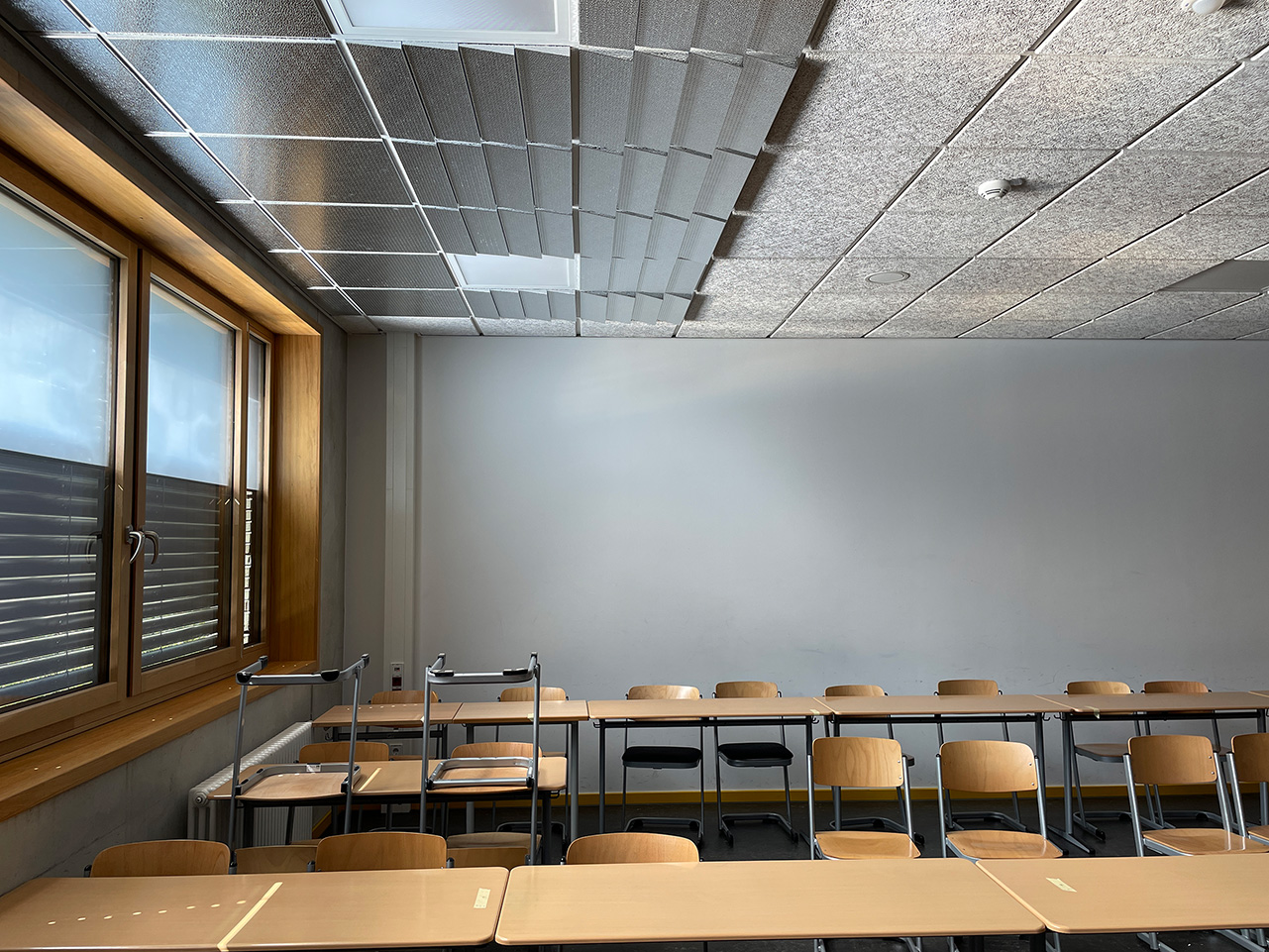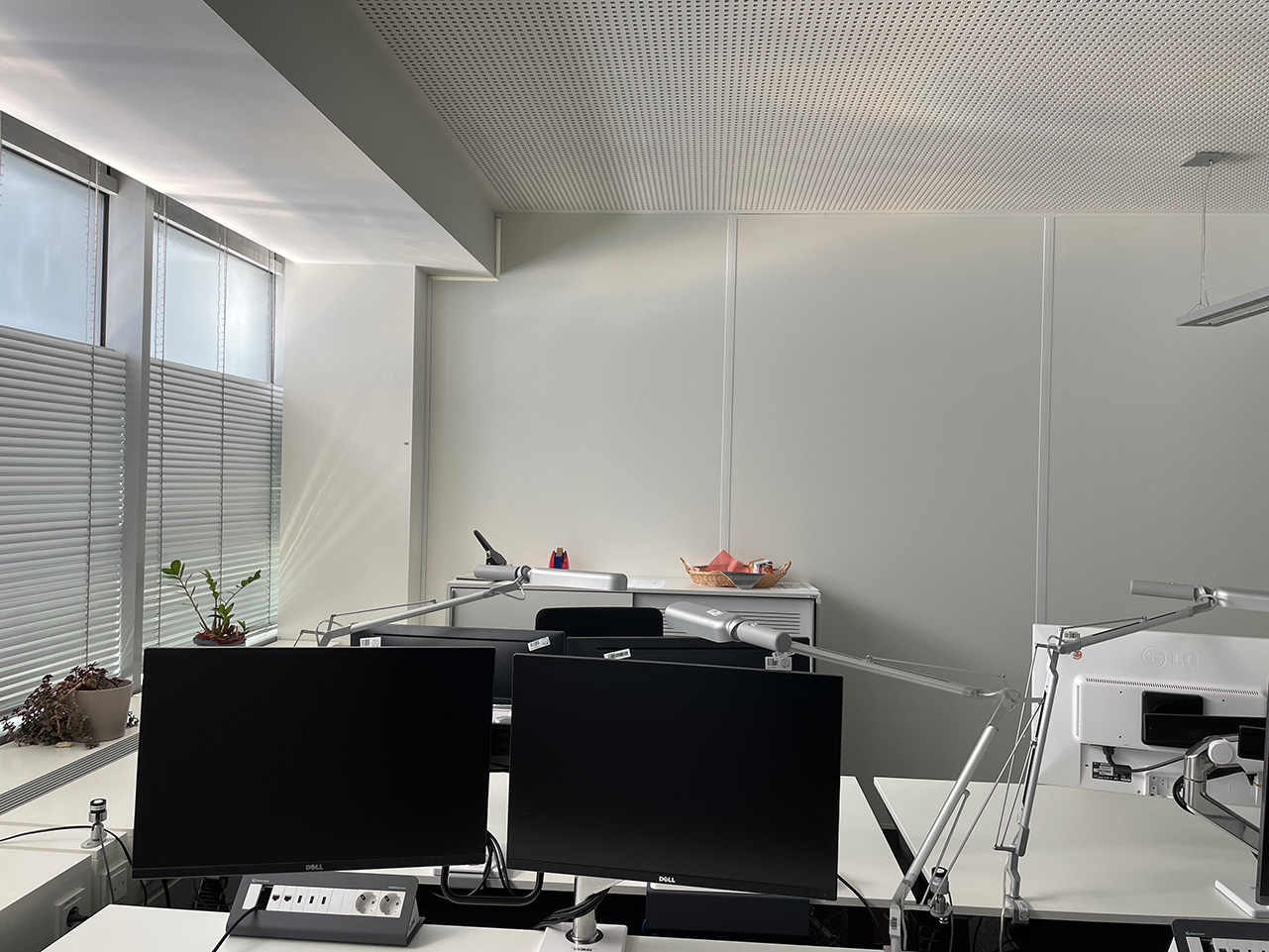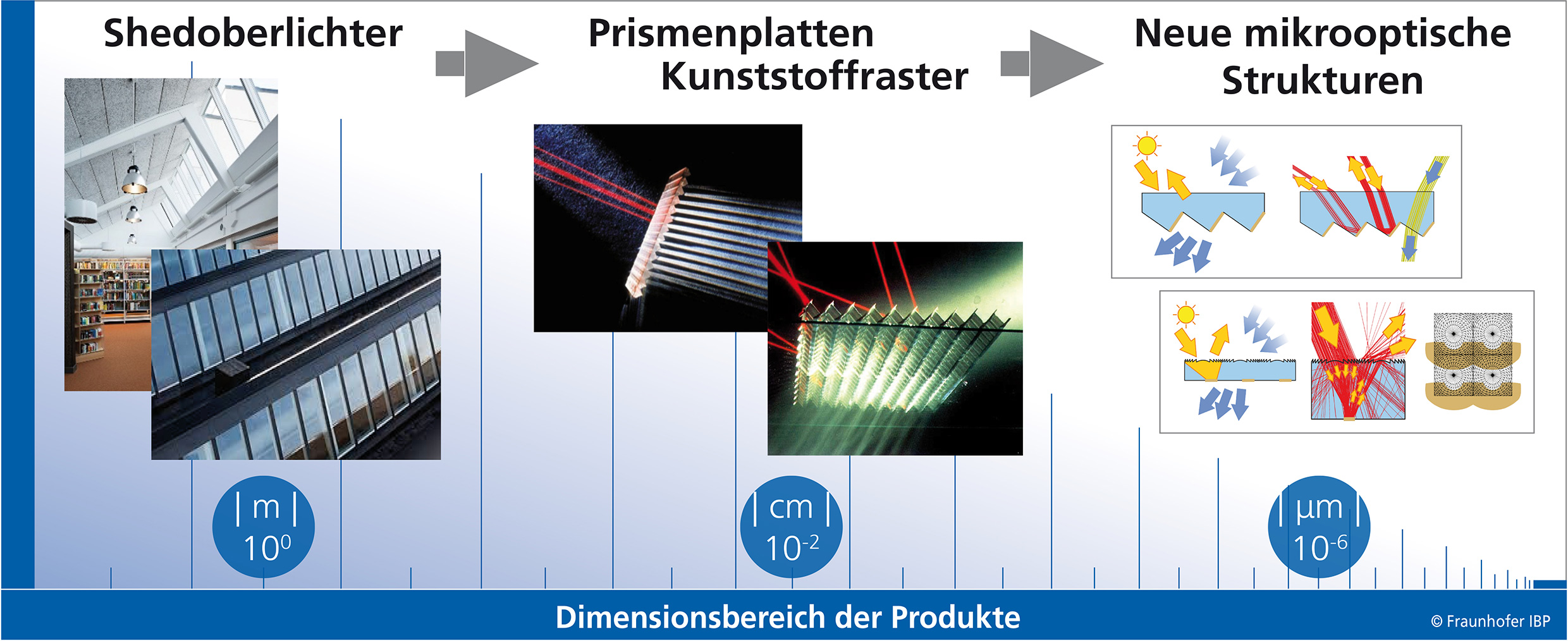In the previous BMWi-funded project “TaLed – Energy-efficient and cost-effective LED and daylight lighting integrated into façades using micro-optical building components, 03ET1330A-G”, a light-directing structure for vertical façades was developed, which is now available in dimensions suitable for building applications. In Part A of the project, these were further optimized for practical use in two demonstration buildings (school building and office building), where their energy efficiency and user acceptance were tested and evaluated in a monitoring process. In parallel, instruments were developed to support the market launch. Project Part A thus paved the way for the practical introduction of the new structure.
In Part B of the project, new micro-optical structures were developed for the other key building application in daylight utilization - the natural illumination of building structures via skylights and horizontal glazing. In terms of aspects such as efficiency and potential for mass production, these should be comparable with the structure for vertical façades. The core task of this development was to optimize the relationship between daylight entry and sun shading while ensuring a high level of visual comfort (glare control). This has been achieved without the use of cost-intensive mechanical tracking systems for sun shading structures. Two potentially suitable optical structures were initially developed with the aid of simulations. Due to the different irradiation angles and the resulting increased requirements for light/radiation guidance, the optical principles developed in previous projects based on TIR (Total Internal Reflection) were supplemented by partially mirrored surface elements. Manufacturing processes were further developed accordingly. At the same time, methods and characteristic values were derived to differentiate them from current market solutions (skylight domes and strips) as regards energy assessment and visual comfort. The first glare assessment approaches were tested. The work was accompanied by the development of concepts for integrating the micro-optical structures from an architectural point of view.


